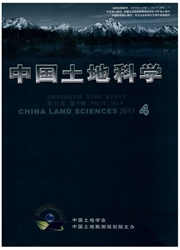

 中文摘要:
中文摘要:
研究目的:从城市发展的人口就业、产业发展、土地利用的综合角度,测度中原城市群城镇化发展的系统动态性与发展水平。研究方法:立足于PIL(人口一产业一土地)的城镇化三维分析框架,运用ROXY模型和TOPSIS模型定量分析中原城市群城镇化时空演进轨迹,并探寻其协同发展的整体态势。研究结果:(1)1996年以来,中原城市群城市人口与第二产业发展呈现收敛一加速极化一加速收敛一加速极化的演进轨迹,城市建设用地则呈现出与城市人口、第二产业截然相反的时空演进过程,第三产业始终处于极化发展的空间状态;(2)郑州市作为中原城市群城镇化发展的龙头城市地位凸显,但当前仍呈现一种“弱核牵引”状态;(3)第三产业更能代表城镇化发展的层次和水平。研究结论:以ROXY和TOPSIS模型对城镇化发展进行分析,有助于把握多元系统建构与动态演进;不同要素在发展时序上的不匹配,客观上印证了城镇化发展的系统复杂性,也证明了PIL三维框架分析的必要性。
 英文摘要:
英文摘要:
The paper aims to study the trend and development of the urbanization of Zhongyuan Urban Agglomeration in terms of population, industry development and land use (PIL). ROXY and TOPSIS models are employed to analyze its evolution and explore the overall trend of urbanization based on the PIL three-dimensional framework. It is found that 1 ) since 1996, the urban population and the second industry development underwent a process of diminish, accelerated expansion, accelerated diminish and accelerated expansion. However, for the construction land, a completely different trend occurred, while the tertiary industry is always in accelerated expansion; 2) as the leading city of Zhongyuan Urban Agglomeration, Zhengzhou occupies a prominent position, but is still weak in stimulating development; 3)the tertiary industry, compared with the secondary industry, plays a more erucial role in representing the stage and level of urbanization. It is eoncluded that ROXY and TOPSIS models used in urban development are helpful to a better grasp of multi-system construction and dynamic evolution. Then, the ill-matched state of different elements in the development process confirms the complexity of urbanization system, and also proves the necessity of three-dimensional framework to the analysis of PIL.
 同期刊论文项目
同期刊论文项目
 同项目期刊论文
同项目期刊论文
 期刊信息
期刊信息
